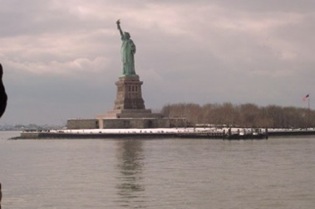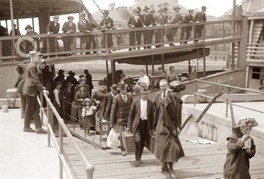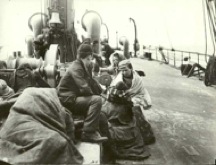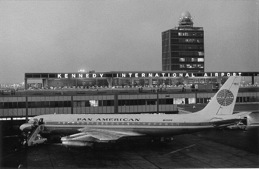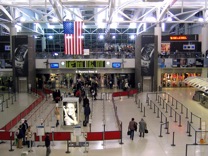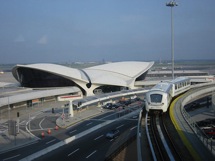From The Peopling of New York City
History of Ellis Island
From 1794 to 1890, Ellis Island was named Fort Gibson and was an important military role and defense system. Ellis Island opened in 1892 as a federal immigration station and officially closed in 1954. Almost 40% of current U.S. citizens can trace at least one of their ancestors to Ellis Island. When Ellis Island opened, immigrants from Western Europe flooded into New York; later on in the Eastern Europeans were the majority of immigrants. The first wave brought approximately eight million immigrants, mostly from Western European countries such as England, Ireland, Germany and the Scandinavian countries. They left the Old World for numerous reasons including longing for a better life, war, famine, religious persecution, drought. "When we got toward Ellis Island, the boat slowed down and, oh, I felt better
and I was happy. When we saw Miss Liberty, I can't tell you the felling
that we had. We were so happy and we started to sing."
--Renee Berkoff (Hungarian) Ellis Island, 1922
"A week or more across the Atlantic. You leave one world for another.
We were seasick. And when you're seasick you wish you were dead... and we were
third class. Down at the bottom... they would always tell us to go up
on the deck...and sometimes after a while you would feel a little better and
then at night you'd go back into your dungeon cabin again and the cabin was
two by four."
-- Regina Sass Tepper (Polish)
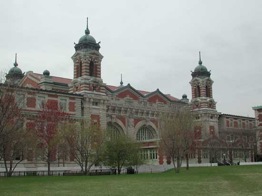
In 1920, Ellis Island reopened as an immigration receiving station and 225,206 immigrants were processed that year. It was officially closed for immigration procedures in November 1954. In 1965, President Lyndon Johnson declared Ellis Island part of the Statue of Liberty National Monument. Ellis Island was opened to the public on a limited basis between 1976 and 1984. Starting in 1984, Ellis Island underwent the largest historic restoration in U.S. history. The $160 million dollar project was funded by donations made to The Statue of Liberty - Ellis Island Foundation, Inc. in partnership with the National Park Service. The Main Building was reopened to the public on September 10, 1990 as the Ellis Island Immigration Museum. Today, the museum receives almost 2 million visitors annually.
History of JFK Airport
John F. Kennedy (JFK) Airport in Queens, New York is one of the busiest airports in the United States. Surprisingly it was only built to relieve the overflow of local LaGuardia Airport. Originally JFK was called Idlewild Airport for the golf course that it was built on. Construction began in 1942, it was planned to only be 1,000 acres but ongoing construction is taking place to this day. In 1943 it was renamed Major General Alexander E. Anderson Airport after a Queens resident who died in World War II. In 1948, the New York City Council again change the name to New York International Airport, Anderson Field though most people still called it Idlewild Airport. In December 1963, it was finally renamed John F. Kennedy International Airport in remembrance of the assassinated president. The Port Authority of New York of and New Jersey manage JFK Airport; they oversee bridges, tunnels, bus terminals, airports and seaports. JFK Airport has now expanded to 4,930 acres and has 30 miles of roadway. The airport has eight terminals and has domestic, charter and international airlines. They constructed a monorail connecting JFK to LaGuardia. JFK Airport has been considered the new Ellis Island because New York City is the hot spot of immigration. During this semester our group explored the differences and similarities between the procedures and immigration laws from
Ellis Island to JFK times.
Return to:
I want to be an American, but how?
